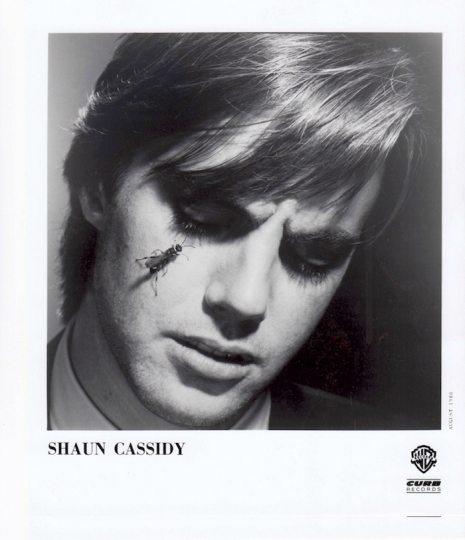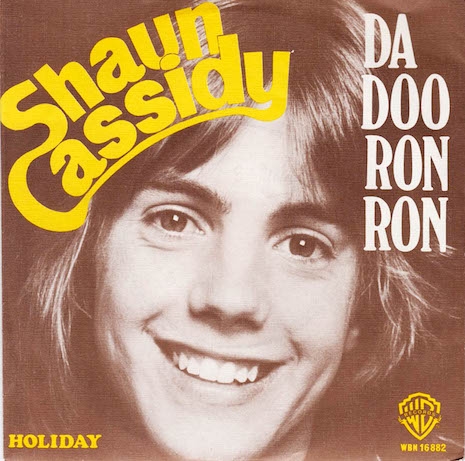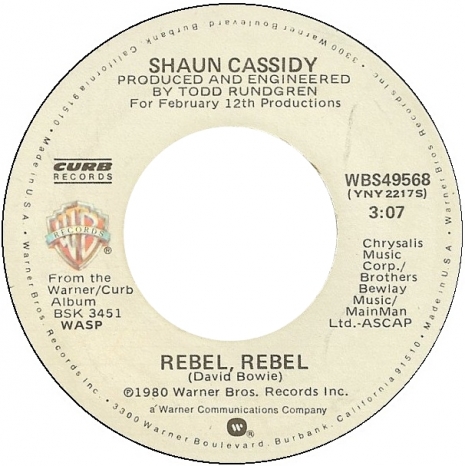
In 1977, after launching his career a year earlier, Shaun Cassidy struck pop music gold with his fluffy cover of the girl group classic, “Da Doo Ron Ron.”. Cassidy’s version went to #1 in the U.S. and his self-titled album sold over three million copies worldwide. Around the same time, the new TV series he was co-starring in, The Hardy Boys premiered, and that too became a hit. Suddenly, Cassidy was a bona fide teen idol, just like his older half-brother David Cassidy who was a massive teen idol before him.

But fame is often fleeting, and by the late ‘70s, Cassidy was already on his way out. In a bold move, he recruited the art rock wizard Todd Rundgren to produce his sixth album. “I’ve admired Todd’s work for a long time,” Cassidy said in 1980. “I’ve always wanted to record some of his songs. There was really no second choice for me as far as who I was going to work with.” The result of this unlikely collaboration was the LP, Wasp.

Cassidy did indeed record a handful of Rundgren originals for the LP, but he also teamed with his producer on selecting tunes to reinterpret. The pair came up with an interesting assortment of songs to take on, including established hits by David Bowie, the Four Tops, the Animals, and Ian Hunter, along with album-only cuts from the Who and the Talking Heads. Cassidy was backed by Rundgren and his band, Utopia.

Utopia in 1980.
On paper, this seems like a bizarre collaboration—with Cassidy playing the role of pop star in over his head—but it resulted in a surprisingly good, entertaining record. If nothing else, Wasp sure is weird! Of the originals, the title track is a highlight, due to its sheer strangeness. Over an electro backing, Cassidy spits out Rundgren’s peculiar lyrics in an aggressive, rap-like manner. “Pretending,” meanwhile, is a complete about-face—a ballad that possesses some emotional power thanks to Cassidy’s passionate delivery. “The Book I Read,” a deep pull from Talking Heads: 77, features Cassidy’s most crooner-ish vocal, recalling the great Scott Walker (who was also once a teen phenomenon). The faithful, power pop version of the Who’s “So Sad About Us” is the album’s most lively number, and Cassidy really gives it his all for the closer, an offbeat rendering of Ian Hunter’s “Once Bitten, Twice Shy.” But the cover of Bowie’s “Rebel Rebel,” the LP opener and lead single, is the high point of Wasp. Utopia’s new wave backing—complete with a cool synth line and video game-like sound effects—flirts with disco, as Cassidy sings in a lower register, echoed by an odd, munchkin-sounding vocal. Later on, lyrics from the Crystals’ “He’s a Rebel” are incorporated—a genius move, as it has the “rebel” theme and recalls “Da Doo Ron Ron,” also originally recorded by the Crystals. As he does throughout Wasp, Cassidy sounds totally committed here, experimenting with his voice, at times pushing it to the breaking point.

Who would’ve thought that remaking Shaun Cassidy as a cutting edge new wave artist was even possible? In a sense, it wasn’t…
Continues after the jump…






